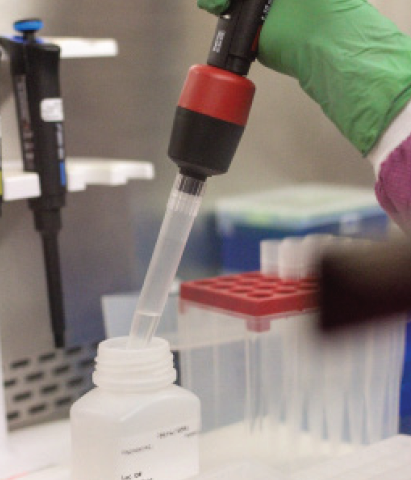2023 Public Health Laboratory Annual Report
Wastewater Testing Helps Fight COVID-19, Other Infectious Disease
Wastewater surveillance can provide early warning of the spread of infectious disease
 When the Department of Health and other American public health institutions fight an infectious disease like COVID-19, it is important to know where the pathogen is spreading. Traditionally, it is discovered after people have reported the symptoms and received diagnoses at hospitals.
When the Department of Health and other American public health institutions fight an infectious disease like COVID-19, it is important to know where the pathogen is spreading. Traditionally, it is discovered after people have reported the symptoms and received diagnoses at hospitals.
Studying wastewater data can help scientists detect infectious diseases in a community even before data from doctor’s offices or hospitals is reported to public health officials.
Wastewater Testing on a National Scale
In September 2020, the Centers for Disease Control and Prevention (CDC), along with the Minnesota Department of Health and several other state institutions, established a system for earlier detection. The National Wastewater Surveillance System (NWSS) tests samples from sewage to discover whether pathogens have spread throughout an area.
The program began with a focus on COVID-19. When a person is infected with SARS-CoV-2, the virus that causes COVID-19, the virus and its genetic material is shed in feces, which when become part of the wastewater system. As part of the NWSS program, samples are taken from wastewater just before it enters treatment plants. The samples are then tested for the presence of the SARS-CoV-2 RNA.
This process does not allow for diagnosing individual people. Instead, it provides valuable population-level data to complement, but not replace, other sources of information about infection rates.
Testing Sites Throughout Minnesota
The Minnesota Department of Health and the Metropolitan Council set up wastewater sampling in the metro area, and the University of Minnesota set up a network of 44 sites around the state to monitor. The samples are sent to MDH for testing, after which MDH sends the test results to the CDC.
Currently, the Minnesota Environmental Laboratory is in the process of adding more sample testing locations, devoting instrumentation and two full-time technicians to the effort.
Detecting Disease Variants Earlier
The SARS-CoV-2 virus has a remarkable ability to mutate into new variants. This gives vaccine manufacturers and other health institutions little time to develop a response to each. NWSS has proven especially effective in uncovering new variants of the disease faster than could be possible otherwise. As the threat from COVID-19 wanes, some participating laboratories have begun testing for other pathogens, including flu, polio, mpox, and antimicrobial-resistant organisms.
The COVID-19 pandemic put the threat of infectious disease at the front of public awareness. It also demonstrated the phenomenal ability of the modern health infrastructure, ranging from public health institutions to for-profit vaccine manufacturers, to collaborate and respond effectively. Wastewater testing has proven to be another important tool in the global effort to combat infectious disease.
How Wastewater Surveillance Works
- People infected with SARSCoV-2 can shed viral RNA (genetic material from the virus) in their feces, even if they have no symptoms.
- A sample of wastewater from a sewershed (the area served by a wastewater collection system) is collected before it is treated at the water treatment plant.
- The samples are sent to environmental or public health laboratories for SARS-CoV-2 testing.
- Health departments submit testing data to CDC through the online NWSS Data Collation and Integration for Public Health Event Response (DCIPHER) portal.
- The NWSS DCIPHER system analyzes the data and reports results to the health department for use in their COVID-19 response. The results are available to the public through CDC’s COVID Data Tracker.
Return to the main 2023 Annual Report page.